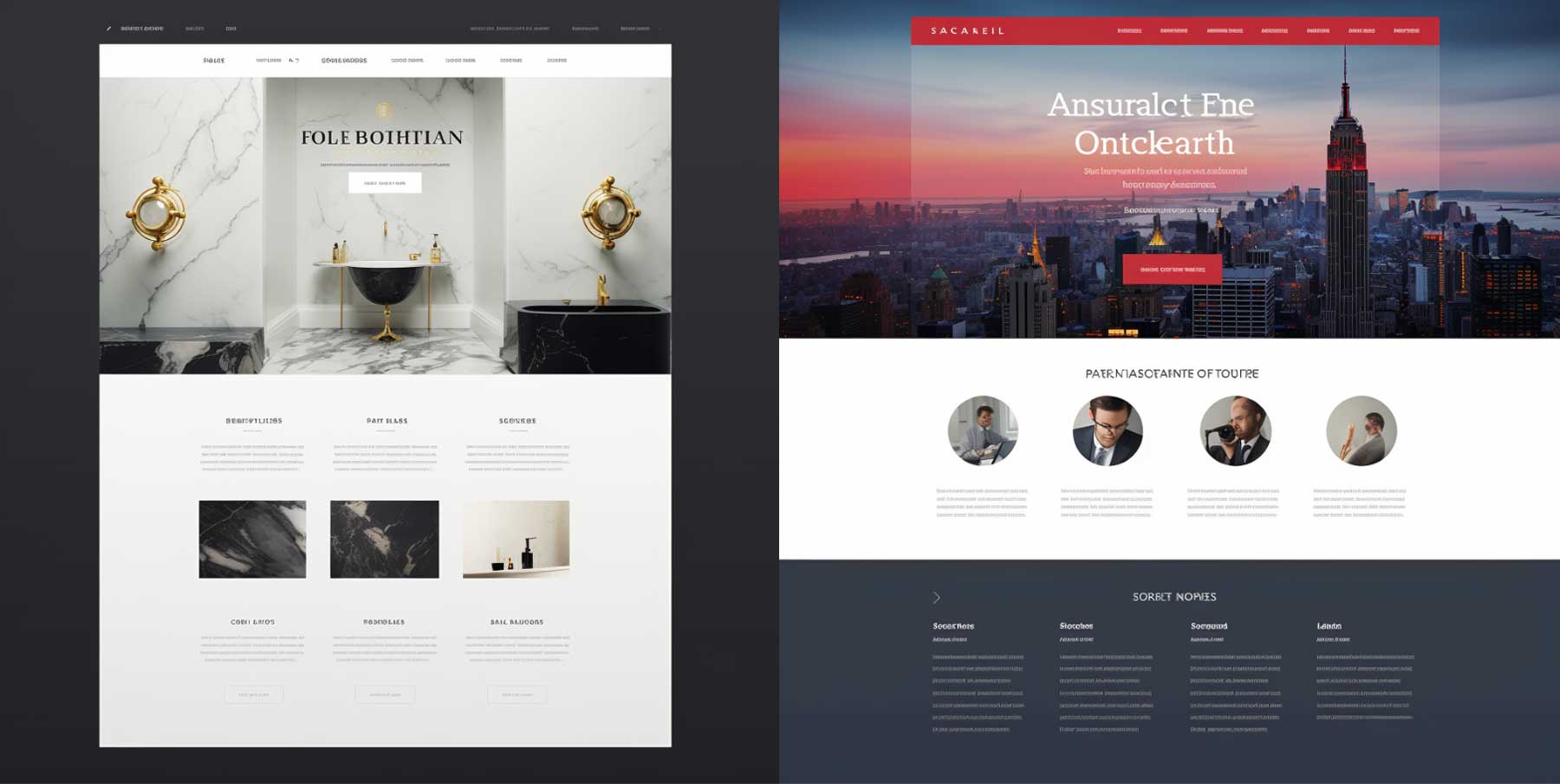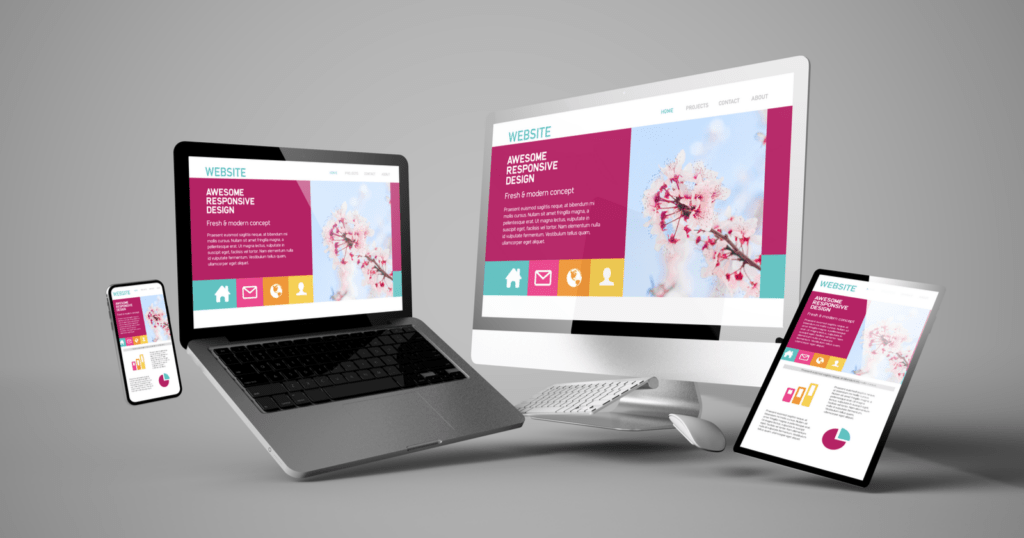Modern Internet Site Style That Captures Attention and Transforms
In an increasingly digital landscape, modern internet site layout has emerged as a critical variable in catching user focus and driving conversions. As we check out these vital parts, it comes to be clear that understanding their interplay can substantially impact an internet site's performance and individual fulfillment.
Value of Visual Power Structure
Aesthetic power structure is a vital element in site style, as it overviews users' attention and improves their total experience. By strategically arranging content, designers can guide individuals to one of the most vital details initially, thereby enhancing engagement and boosting use. Efficient aesthetic power structure uses different techniques, including size, shade, spacing, and comparison. Larger elements normally attract the eye, while contrasting colors can highlight key messages, making them stand out among more controlled parts.
Incorporating a sensible flow in content setup is important; for circumstances, placing the most crucial information on top of a web page cultivates instant recognition. Furthermore, consistent use typography, such as differing font dimensions and styles, assists develop a clear material framework. This organization not only aids in navigation yet additionally builds count on, as individuals feel more comfortable when they can quickly discover what they are looking for.
Inevitably, a well-executed aesthetic hierarchy not only improves aesthetic charm yet likewise substantially influences customer actions. By focusing on crucial elements and ensuring a seamless experience, developers can properly transform site visitors right into consumers, enhancing the significance of this foundational style concept in modern-day site advancement.
Responsive Design for All Tools
Creating a seamless experience throughout numerous gadgets is essential in today's digital landscape, where users access internet sites from desktops, mobile phones, and tablet computers alike. Receptive style is a vital technique that makes certain internet sites adjust fluidly to different screen alignments, resolutions, and dimensions. By using flexible grids, pictures, and CSS media queries, designers can create formats that maintain aesthetic integrity and functionality, despite the gadget being made use of.
The value of responsive design expands beyond looks; it directly influences customer engagement and conversion prices. A site that operates well on all gadgets encourages longer brows through and decreases bounce prices, as individuals are more probable to connect with web content that is easy to navigate. Search engines, specifically Google, prioritize mobile-friendly websites in their rankings, making responsive layout an important component of search engine optimization (SEO)
Integrating receptive layout not only boosts user experience but likewise streamlines the growth procedure. By creating a single site that functions across devices, services can conserve time and sources contrasted to developing separate mobile and desktop versions. Ultimately, receptive design is an essential technique for modern-day web site layout, ensuring ease of access and contentment for all users, no matter of their device.
Engaging Interactive Aspects
While a receptive layout lays the foundation for a useful internet site, integrating interesting interactive components is essential for capturing user focus and fostering much deeper connections. Website Design. Interactive components, such as animations, tests, and clickable infographics, develop a much more dynamic individual experience, urging site visitors to spend more time on the site
Including interactive attributes can also guide individuals with complex information, making it easier to digest web content. Interactive sliders can highlight product variations, while ingrained videos can offer presentations or endorsements that resonate even more than static pictures or text. Gamification strategies, like benefits for finishing jobs or engaging with material, can improve customer motivation and retention.
Reliable use interactive elements not just enhances the user experience however can additionally cause higher conversion prices. By making interactions insightful and satisfying, services can grow a sense of loyalty and depend on with their audience. It is crucial to balance interactivity with performance; excessively complicated features might hinder site visit the site speed, adversely affecting individual contentment. Ultimately, integrating well-designed interactive components can considerably raise a website's efficiency, driving engagement and conversions in today's competitive electronic landscape.
Structured Navigation Practices
Effective navigation is a cornerstone of any type of successful web site, as it directly influences user experience and content accessibility. Structured navigating practices make sure that individuals can easily locate details, enhancing their communication with the website. A well-structured navigation menu need to be user-friendly and easy, commonly including a restricted number of primary groups to stay clear of frustrating site visitors.
To accomplish streamlined navigating, developers ought to focus on an ordered structure that realistically organizes content. Applying breadcrumb routes can provide users with context about their current area within the website, permitting seamless backtracking. In addition, utilizing drop-down menus can Home Page effectively preserve area while still providing access to subcategories.
Receptive design is crucial, as navigating must be functional throughout all devices (Website Design). Mobile individuals, specifically, benefit from touch-friendly food selections and collapsible areas that preserve functionality without jeopardizing aesthetic appeals

Efficient Call-to-Action Methods
A well-crafted call-to-action (CTA) is necessary for directing individuals toward wanted end results on a site, as it motivates them to involve with material or make an acquisition. To optimize their efficiency, CTAs need to be clear, compelling, and tactically placed throughout the site.
First, utilize action-oriented language that communicates urgency or worth, such as "Begin," "Join Now," or "Insurance claim Your Price cut." This language not just inspires customers but also sets clear assumptions about the following actions.
Second, think about layout elements; CTAs must stand apart aesthetically through contrasting shades, enough whitespace, and popular positioning. A switch that is very easy to see and click increases the likelihood of user useful site communication.
In addition, personalizing CTAs based upon individual habits or demographics can considerably boost engagement. Tailored messages reverberate more with individuals, driving greater conversion prices.

Verdict
To conclude, contemporary internet site design highlights the combination of aesthetic power structure, responsive designs, involving interactive components, structured navigating, and effective call-to-action techniques. These elements collectively improve individual experience, making certain that site visitors stay engaged and inspired to check out content even more. By prioritizing these layout concepts, companies can significantly improve user retention and conversion prices, inevitably bring about better success in the electronic landscape. The constant advancement of internet layout emphasizes its critical role in efficient on the internet interaction and advertising and marketing.
In an increasingly electronic landscape, contemporary web site design has actually emerged as an essential factor in recording individual attention and driving conversions.Visual pecking order is an essential element in internet site style, as it guides users' focus and improves their total experience.The relevance of receptive layout extends past appearances; it directly impacts individual engagement and conversion rates.Including responsive style not just improves customer experience however likewise improves the development process. Inevitably, responsive design is a fundamental approach for contemporary internet site style, making certain accessibility and complete satisfaction for all customers, regardless of their gadget.